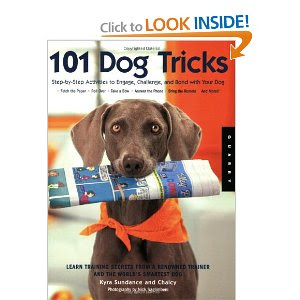The Bond that can come between a person and a dog can be extremely strong, especially if that bond had been strengthened living with each other for many years, I have personally cried after loosing our family dog that had been like a best friend to me from my birth till I as 15 years old, when he was hit by a car one morning.
Dogs serve many different needs for people. Some people get a dog because they are lonely and need a loyal friend or because they want a dog to protect the home. A dog that is taken good care of and given attention to regularly will give his life to help protect his home and his owner. For the blind a dog can be a pair of eyes to help them get around and for the police a dog can be an important tool and a loyal partner, with a nose that nothing can beat.
The first thing you need to know about taking care of a dog is that dogs need lots of exercise. This is the same for large dogs and small dogs. All dogs need to be let out at least once every 8 hours and should given at least a 20 minute walk to give the dog some fresh air, exercise and a chance to relieve themselves.
It is also important to play with the dog on a regular basis. This can mean going to the park on a weekend or day off and having a good game of fetch, tossing the ball around in your back yard or just wrestling on the ground with the dog, just make sure if you are ruff housing with a little dog that you don’t accidentally hurt the dog. Playing with the dog for a half hour a day, is not only good for the dogs physical health but a dig that is played with regularly is mentally healthier and less likely to become a depressed dog, it also lowers your blood pressure as well and it will form an unbreakable bond between you and your pooch, which will extend to your family if you should start having one after having the dog.
What you feed your dog is very important to the dogs continued good health. The better dog foods will be marked for what are groups the food is appropriate for. Younger dogs need certain vitamins and minerals in larger amounts then an adult dog, and the same goes for an elderly dog they need more calcium in their food to help protect their bones and joints. Feeding your dog the wrong food can stunt the dog's growth and opens the dog to a larger risk of surgery when they are older.
Just like a person a dog should be taken to the veterinarian's office every 6 months, and must receive their shots every year. Regular checkups and vaccinations will also help assure that your dog grows to be an old happy dog.
Dogs serve many different needs for people. Some people get a dog because they are lonely and need a loyal friend or because they want a dog to protect the home. A dog that is taken good care of and given attention to regularly will give his life to help protect his home and his owner. For the blind a dog can be a pair of eyes to help them get around and for the police a dog can be an important tool and a loyal partner, with a nose that nothing can beat.
The first thing you need to know about taking care of a dog is that dogs need lots of exercise. This is the same for large dogs and small dogs. All dogs need to be let out at least once every 8 hours and should given at least a 20 minute walk to give the dog some fresh air, exercise and a chance to relieve themselves.
It is also important to play with the dog on a regular basis. This can mean going to the park on a weekend or day off and having a good game of fetch, tossing the ball around in your back yard or just wrestling on the ground with the dog, just make sure if you are ruff housing with a little dog that you don’t accidentally hurt the dog. Playing with the dog for a half hour a day, is not only good for the dogs physical health but a dig that is played with regularly is mentally healthier and less likely to become a depressed dog, it also lowers your blood pressure as well and it will form an unbreakable bond between you and your pooch, which will extend to your family if you should start having one after having the dog.
What you feed your dog is very important to the dogs continued good health. The better dog foods will be marked for what are groups the food is appropriate for. Younger dogs need certain vitamins and minerals in larger amounts then an adult dog, and the same goes for an elderly dog they need more calcium in their food to help protect their bones and joints. Feeding your dog the wrong food can stunt the dog's growth and opens the dog to a larger risk of surgery when they are older.
Just like a person a dog should be taken to the veterinarian's office every 6 months, and must receive their shots every year. Regular checkups and vaccinations will also help assure that your dog grows to be an old happy dog.
 RSS Feed
RSS Feed Twitter
Twitter